Interacting with Artistry
As interpretation director at Nashville's Frist Art Museum, Meagan Rust helps the public make connections to world art and culture.
Janel Shoun-Smith | 615-966-7078 |
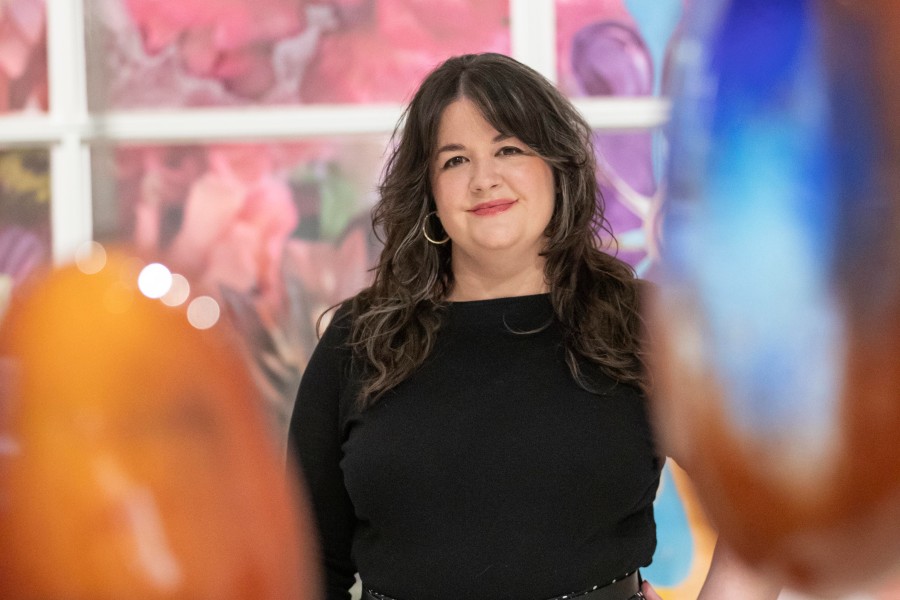
Society’s typical image of an artist is likely one person with paint and an easel, or perhaps one person with a chisel and a block of stone.
But for Meagan Rust (BA ’08), interpretation director at the Frist Art Museum in Nashville, her canvas could be a sound recording, an interactive touch screen, a tour script or craft project, or even a stage production.
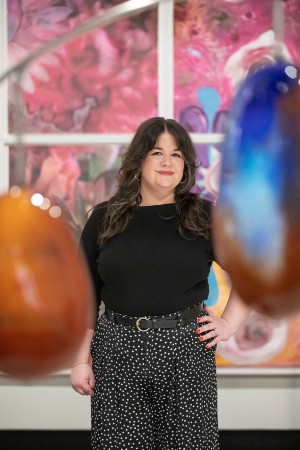
Rust wakes up every day to develop and implement programs to help visitors understand and interact with art. That’s a tall order as the Frist Museum is devoted to highlighting art of the entire world. The museum can show up to 15 exhibits per year and has shown art from every continent except Antarctica, said Rust.
“You may not like Japanese art, but maybe you love horticulture. So we had the Nashville Bonsai Society here at the museum, and maybe that is your entry point,” she said in reference to the museum’s “Journey through Japan: Myths to Manga” exhibit, showing through Feb. 16.
“I am always thinking of different ways to help people make those connections,” she said.
That could include anything from the written descriptions on the gallery walls and the audio tour guide to performances, hands-on activities or interactive touch screens. She develops materials for and trains volunteer tour guides, familiarizing them with the current exhibits. She organizes lectures and art classes and occasionally leads tours, while also working on the team to help select future exhibits and developing programs for the next exhibition.
Luckily, Rust was well-prepared for her broad-based role at the Frist through her years at Lipscomb and later at New York University, which both allowed her to customize her academic schedule to pursue a wide range of intellectual interests within art and art history.
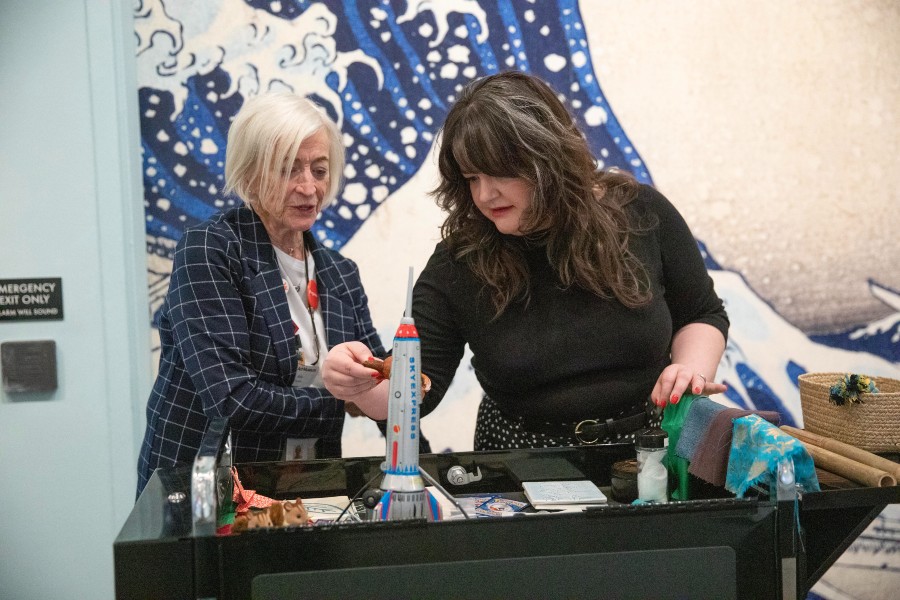
Meagan Rust working with a violunteer docent at the Multisensory Exploration Station for the exhibit "Journey through Japan: Myths to Manga."
Lipscomb runs through the veins of much of her family. She is the granddaughter of the late Carolyn Wilson (’57), who served as director of the Beaman Library for 15 years, and her mother and aunt both attended Lipscomb Academy. Wilson “was a big reason why I went to Lipscomb,” said Rust. “She was such an amazing champion to have.”
Rust began her Lipscomb days as a pre-architecture major, but quickly realized that she loved the art classes much more than the math classes. Through discussions with some of the art professors, especially then-Chair Laura Lake Smith, she switched to a studio art major.
Like many other Lipscomb’s art majors, she tweaked her major with French and art history minors and independent studies to customize her experience to fit her true passions. The art faculty also helped her secure an internship at the Royal Academy of Arts through Lipscomb’s program to study abroad in London.
She enjoyed her tailor-made curriculum so much that when applying for graduate school at New York University she chose to study in the university’s Gallatin School of Individualized Study.
“My time at Lipscomb set me up for success there because you develop your own program,” said Rust. “I feel like if I had been at a larger school, then maybe I wouldn’t have had the same opportunities.”
At Lipscomb she was exposed to a variety of art and artists through the Presidential Lectureship for Art and Art History, her painting class with Rocky Horton (MBA ’21), now director of the School of Art & Design, and working with the Student Art Association, which did pop-up shows during her time at the university.
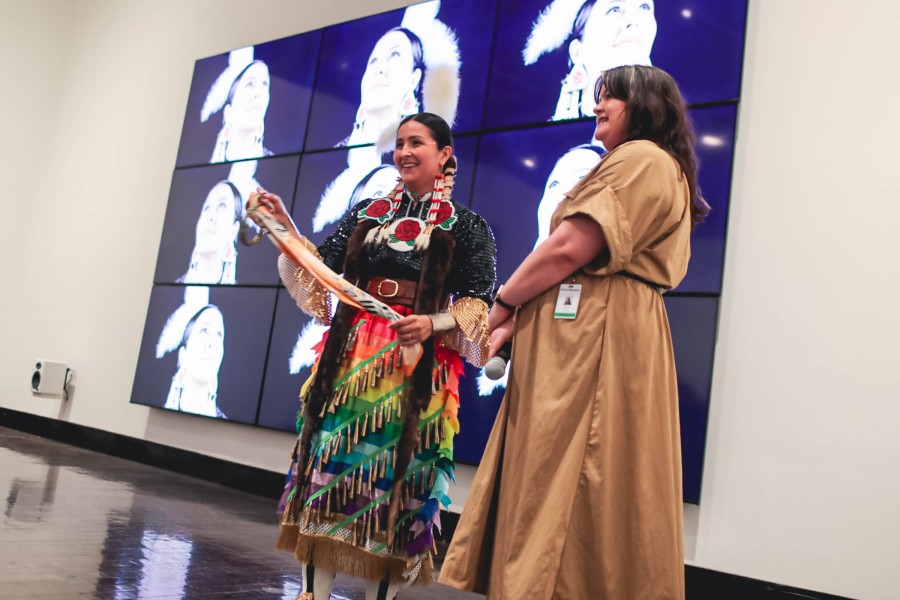
Rust with performer Sarah Ortegon as part of the exhibit "Jeffrey Gibson: The Body Electric" in 2023. Photo provided by Frist Art Museum.
At Gallatin, she continued her all-encompassing approach to education by taking courses in anthropology, the fine arts, museum studies and arts in politics, among others. She also secured an internship in the educational department of the Metropolitan Museum of Art while studying in New York.
She knew she wanted to work in a museum, but beyond that, she had many varied interests in the field. “The Gallatin School allowed me to hone in on those interests and not limit myself,” she said. “Because I was exposed to so much at Lipscomb, it was challenging for me to narrow in, so when I found the Gallatin School, it was exciting to me to know I could explore many different areas.”
That serves her well in her role today where one month she may be focused on presenting examples of Tehuana style garments similar to what Mexican painter Frida Kahlo was famous for, and the next month she’s working to coordinate video interviews with 11 artists featured in “Multiplicity: Blackness in Contemporary American Collage.”
For “Light, Space, Surface: Works from the Los Angeles County Museum of Art,” a very abstract exhibit of conceptual art, Rust coordinated the creation of an ambient soundtrack, based on certain works in the exhibit and performed by the Nashville Ambient Ensemble. The loaning Los Angeles museum liked the recordings so much they flew the Nashville ensemble to California to perform the works for their exhibit of the pieces.
For the currently showing exhibit, “Farm to Table: Art, Food and Identity in the Age of Impressionism,” the museum developed a companion exhibit, “Tennessee Harvest: 1870s-1920s,” to provide a local connection to the Impressionist French art.
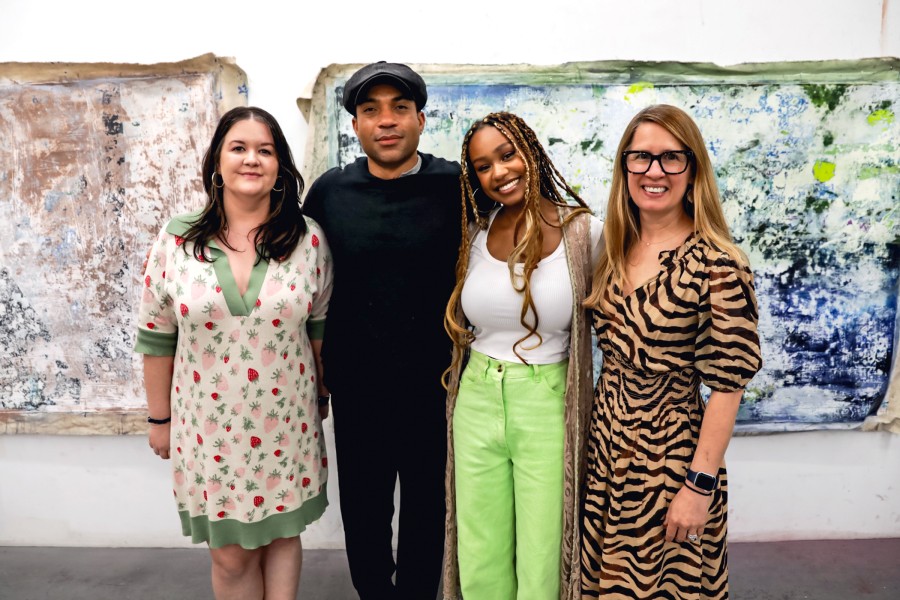
Meagan Rust with artist Wardell Milan, featured in the exhibit "Multiplicity," and other Frist staff. Photo provided by Frist Art Museum.
To connect these exhibits to Nashvillians, who enjoy a burgeoning food scene, Rust produced an audio tour that features local community members, from organizations such as the Tennessee Association of Farmers Markets to local restaurants and social service organizations, responding and commenting on the included works of art. The tour includes officials from Second Harvest Food Bank, Bloomsbury Farm and Little Gourmand.
On top of all that, Rust still enjoys creating her own art, but she enjoys using both sides of her brain on the Frist exhibits even more.
“I enjoy being on the exhibition side of things. Part of my brain is analytical and loves organization and the critical side of art, but I also get to exercise the creative side of my brain as well,” she said.
Among her favorite projects at the Frist is one of the first she worked on: a full-scale stage production with close to 100 community performers at the Schermerhorn Symphony Center featuring artist Nick Cave, an American sculptor, dancer and performance artist who creates wearable assemblage fabric sculptures that are bright, whimsical and other-worldly.
“It was wonderful to be able to work closely with the artists,” she said, “and it brought the community together in an amazing way.”
She is very proud and happy to be able to use her creativity and skills to serve the community where she was raised. “I feel a strong sense of wanting to give back to a place where I grew up in whatever way I can,” she said. “It’s really nice to be connected to your roots.”
Photos by Kristi Jones and provided by the Frist Art Museum